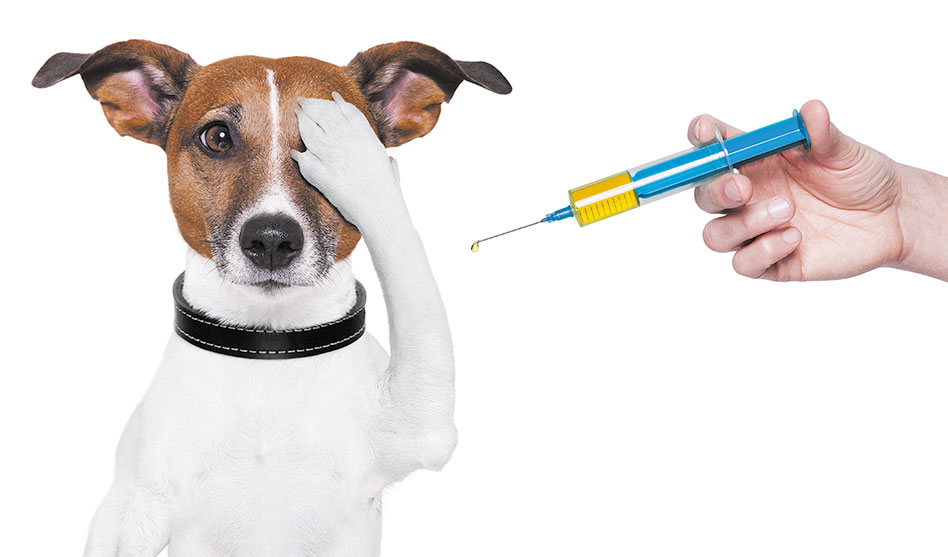 Bienvenidos, Dallas Voice readers! I hope you are doing well, and thank you for taking the time to read my monthly Woof column. This time around, we are talking about the common vaccines available for our dogs and cats. It is important to note that different doctors have different vaccination protocols, but most of us follow a similar protocol.
Bienvenidos, Dallas Voice readers! I hope you are doing well, and thank you for taking the time to read my monthly Woof column. This time around, we are talking about the common vaccines available for our dogs and cats. It is important to note that different doctors have different vaccination protocols, but most of us follow a similar protocol.
As always, I am a fan of “less is more,” and I believe that some vaccines should only be administered based on lifestyle needs. But make your decisions based on a conversation with your veterinarian.
The most common canine vaccine protects against parvovirus, a lethal virus transmitted through stools of an infected dog. Parvo attacks the inner lining of the stomach and intestines of unvaccinated or not fully vaccinated dogs, especially puppies and younger dogs. An infected dog will usually show lethargy, lack of appetite, vomiting and/or bloody diarrhea.
These poor babies need medical attention right away and, once diagnosed through testing, will most likely need hospitalization, as they often succumb to malnourishment and dehydration fairly quickly.
The virus itself can live in the environment for months, which is why we strongly recommend quarantining pups at home until after they are fully vaccinated. The parvo vaccine is usually administered at 6-8 weeks of age and given every 3-4 weeks until four months of age. Afterwards, it is administered either yearly or every three years, based on age and lifestyle.
The canine parvovirus vaccine will almost always be combined with an important vaccine against another lethal virus: the canine distemper vaccine.
Canine distemper is transmitted mostly through saliva, including sneeze and cough droplets from an infected dog or animal that may carry the virus. This virus, which mainly affects the respiratory and nervous systems, can only be prevented with proper vaccination, as there is no cure for it. The distemper vaccine has a very similar vaccination schedule as the parvo vaccine.
The third common vaccine for dogs is the Bordetella vaccine, also known as the “Kennel Cough” vaccine, which protects against the Bordetella bacteria.
This organism is one of many that cause the contagious respiratory disease, and while the vaccine may not completely prevent the disease, it usually helps in avoiding significant complications from it.
The Bordetella vaccine only prevents infection with that bacteria, not the other organisms that can cause Kennel Cough, but this vaccine — usually given after eight weeks of age and usually repeated for six-to-12 months — is still highly recommended.
After the recent canine influenza outbreak we have seen in the DFW area, we are also recommending that pups that may be exposed to other dogs in parks or in boarding or grooming facilities get the canine influenza vaccine annually. This protocol includes the initial vaccine and a booster after three-to-four weeks. The ideal vaccine protects against two strains of the virus, and it is important to check whether your veterinarian has it, as it has been in backorder status recently.
Of course we cannot forget about the rabies vaccine, which is administered to both dogs and cats. It prevents infection with this deadly virus that is transmissible to humans, and the Texas Department of State Health Services requires dogs and cats to be vaccinated against rabies by four months of age.
If an unvaccinated dog or cat is involved in a bite incident where a human was injured, it may unfortunately lead to challenging quarantines that may be stressful for both parents and pets.
This vaccine is administered annually or every three years, based on multiple factors.
Other than the feline rabies vaccine, our kitty vaccines include the feline distemper vaccine, a combo that protects against multiple contagious organisms that cause respiratory and gastrointestinal diseases. This vaccine is usually started after six weeks of age and it is administered every three-to-four weeks until four months of age, then every one-to-three years long term.
Lastly, we can also vaccinate against feline leukemia, a contagious virus for which there is no cure and which affects the immune system of our cat friends. Before this vaccine is started, we perform a quick blood test to make sure they are negative (free of infection from the virus) and then the vaccine series can be started as early as eight weeks, followed by a booster three-to-four weeks after. This vaccine may be recommended annually for life, based on lifestyle.
Please be aware that there are more vaccines available for our dogs and cats (including the important canine Leptospira vaccine), but the vaccines discussed here are the most common ones. Based on your baby’s lifestyle, some vaccines may be recommended over others.
When it comes to vaccine reactions, the most common ones are slight lethargy and soreness at the injection site. These usually go away within a couple of days. More concerning reactions include excessive vomiting/diarrhea, facial swelling, hives and even collapsing. These reactions can be life threatening and should be immediately addressed by a veterinarian. Thankfully, we do not commonly see these reactions nowadays.
It is important to remember that most vaccines are not considered 100 percent effective. But they still have a vital function, and we always recommend them, based on your pet’s lifestyle.
As always, I hope I have been able to share some valuable knowledge and if there is anything else you may want to learn, feel free to contact my hospital, and we will gladly answer your questions, or make consult with your veterinarian. Thank you and big abrazos for everyone!
Dr. Josh owns Isla Veterinary Boutique Hospital, 14380 Marsh Lane, Ste. 110 in Addison. Call him at 972-738-1111 or visit IslaVet.com.
















